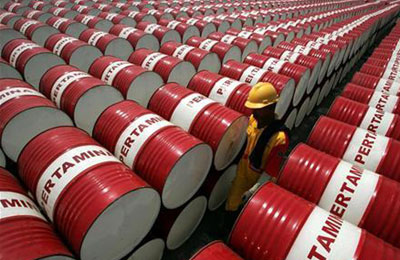
Brent slips over emerging market demand fears
London, January 27, 2014
Brent oil futures eased towards $107 a barrel on Monday as investors dumped risky assets over worries about weaker emerging market economies, but U.S. crude held up due to a spell of cold weather.
The U.S. Federal Reserve is widely expected to cut its bond-buying by another $10 billion at its regular two-day policy meeting starting on Tuesday, with knock-on effects for emerging market liquidity. Tighter credit conditions in China are also raising fears of a slowdown.
"There is quite a lot of uncertainty creeping in here," said Ole Hansen, senior commodity strategist at Saxo Bank.
Brent crude was down 32 cents to $107.56 a barrel by 1019 GMT. But U.S. oil gained 27 cents to $96.91.
The weaker Brent price reflected a sell-off in stock markets in Asia and Europe following a hammering for emerging market currencies and bonds last week.
Emerging markets benefited from investment flows when interest rates in the United States and other developed markets were low. But now that the Fed is changing tack, investors are getting out of the emerging markets with large current account deficits, raising fears over their future economic health.
"Investors are withdrawing from risky assets, and that includes cyclical commodities," said Carsten Fritsch, an energy analyst at Commerzbank in Frankfurt. He was surprised Brent had not moved lower given the sell-off in emerging markets
"These are the main drivers of commodities demand," he said. "If this turmoil leads to slower economic growth, then commodities demand would cool somewhat."
Analysts also pointed to concerns over Chinese growth following weaker-than-expected data last week. A Reuters poll showed economists expected Chinese GDP growth to slow to 7.4 percent in 2014 from 7.7 percent in 2013.
"Emerging markets have had a turbo boost from loose Federal Reserve monetary policy and Chinese growth with its insatiable commodities demand," said David Hufton, managing director at PVM Oil Associates. "Remove one prop and it's a potential problem. Remove both and the potential is realised."
COLD WEATHER
U.S. crude prices remained underpinned by the freezing conditions across Canada and the United States, which have boosted demand for natural gas and heating oil.
U.S. natural gas prices are at a four-year high, and Hansen said it looked as if a heating oil shortage was beginning to develop on the U.S. East Coast.
"That has supported the whole energy complex in the United States," he said.
U.S. crude was also underpinned by the opening last Wednesday of the southern leg of Transcanada's Keystone pipeline extension. This will help alleviate the supply bottleneck at Cushing, Oklahoma, a major delivery point for U.S. crude.
The opening triggered some spread compression between Brent and U.S. crude, which is now trading at around $10.63 a barrel, in from around $15 a barrel on Jan. 9. – Reuters







